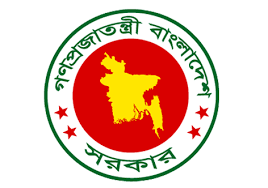A continuity of economic and political crisis has shot up Bangladesh’s poverty rate by nearly 10 percent over the past two years, finds a new survey of worsened poverty situation in the country, the Power and Participation Research Centre (PPRC).
The number of population living below the upper poverty line has now jumped to 27.93 percent from 18.7 percent in 2022, while the number of extreme poor nearly doubled to 9.35 percent from 5.6 percent two years ago.
The key reasons behind the surge have been indentified as prolonged Corona pandemic, mounting inflation and politico-economic uncertainty in the aftermath of the 2024 uprising.
“The July uprising not only brought about a political change in the country, but at the same time it also created huge aspirations for wellbeing among people,” commented Dr Hossain Zillur Rahman, PPRC’s executive chairman, while presenting the study highlights.
“After that, there was a quick policy attention for macroeconomic issues, but there was a deficit in attention for microeconomic realities,” he added.
The PPRC National Study on the State of the Real Economy styled: Economic Dynamics and Mood at Household level in Mid-2025, unveiled on Monday, was carried out among 8,067 cross-sectional households across the country in May this year.
Apart from increased poverty rate, the study has identified nearly 18 percent population as vulnerable non-poor, who are above the upper poverty line with below median per capita income.
Dr Zillur said: “We usually tend to focus on the poor segment, but the Covid crisis has created a large group of vulnerable non-poor population, which needs special attention as further crises have aggravated the situation, which has reflections on large lines in from of TCB trucks.”
According to the study, monthly average expenditure of the bottom 10 percent population climbed to Tk 12,994, surpassing their monthly average income of Tk 8,477 with nearly 55 percent of monthly expenditure going for buying food. Education and medical expenses are other major contributors.
As a result, the bottom 40 percent of households have debt burden at least twice their savings over the last six months with household consumption at the top of the borrowing purposes followed by medical expense, house construction or repair and shop credit for consumption.
It also revealed creeping food insecurity in the country with 8.8 percent of poorest households going out of food for a whole day last month and 12.2 percent of the extreme poor skipping meals last week.
People’s weekly food consumption behaviour showed that nearly 77 percent households do not take beef or mutton in any day of a week, 35.7 percent avoid broiler chicken, 57.1 per skip milk and 72.3 percent keep miss sweets.
Inequality has also intensified during this period. The national Gini coefficient has climbed to 0.436, compared with 0.334 reported in HIES 2022. While rural inequality remains lower at 0.347, urban inequality has reached 0.532.
Approximately 52 percent population – 81.15 percent male and 25.55 percent female – found to be employed in line with ILO’s weekly one hour work employment definition.
However, disguised unemployment was found at 38 percent at the national level, who worked less than 40 hours in a week.
During the first quarter of 2025, 14.3 percent households received Tk 29,762 foreign remittances on average per month. 45 percent of those working are self-employed.
The study finds a set of new vulnerabilities, which include growing health and financial burden of chronic illness. Nearly 51 percent households have one or more members with such morbidity.
Dr Zillur called upon the government to finds ways how to give protection to such households under its social security schemes.
About a quarter of the country’s population (25.52 percent) is now covered by the government’s social safety net, while the coverage reached 36.40 percent for the extreme poor.
Unfortunately, 16.5 percent non-poor population is also under the government’s social security coverage due to mistargeting whereas 27.5 percent vulnerable non-poor are deprived of the benefit, PPRC said.
Despite a major development in supply of drinking water and sanitation, some 36 percent households still use non-sanitary latrine, which is a big challenge for achieving the SDG goals.
Apart from challenges, the PPRC also mentioned economic resilience, including strong remittance inflow and a domestic consumer market size of $211 billion.
The report also highlighted some other areas of resilience line 74 percent smartphone penetration and cylinder gas use by 45 percent households.
Yet optimism is uneven. While 62% of the wealthiest households report feeling hopeful, only one-third of the poorest share that sentiment, with the majority expressing pessimism about their future prospects.
The PPRC called on policymakers to act swiftly, urging emergency family assistance, education grants, and measures to stabilise commodity prices.
It also recommended long-term actions, such as real-time household data monitoring, addressing regional inequalities, and adopting equity-driven economic planning.
Calling for economic planning through people’s lens, Dr Zillur said: “Adopta rights-based, distributive justice framework in budget formulation—moving beyond GDP growth to prioritise equity, voice and citizen well-being.”

